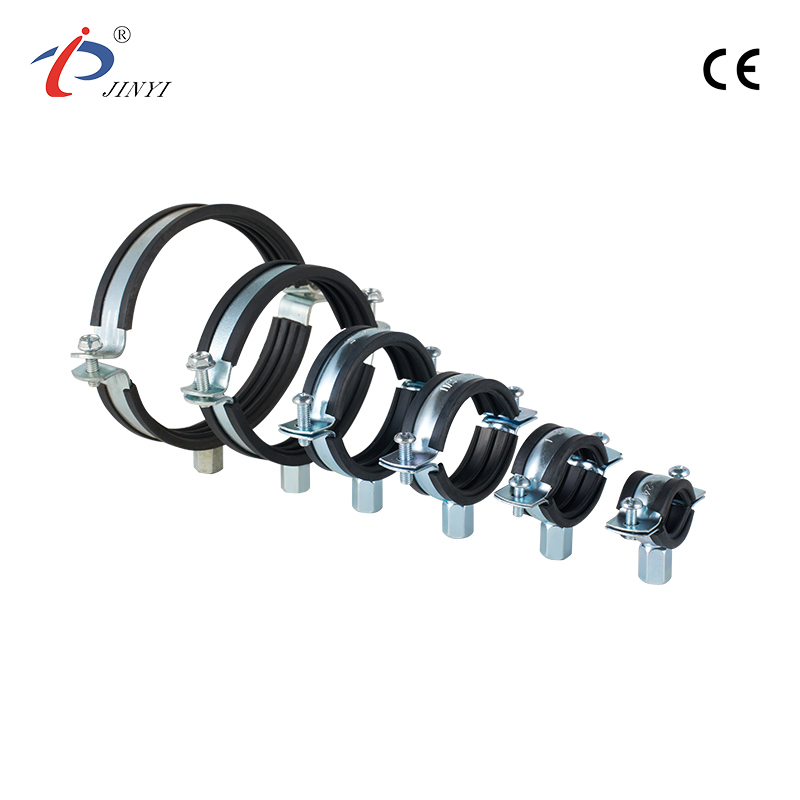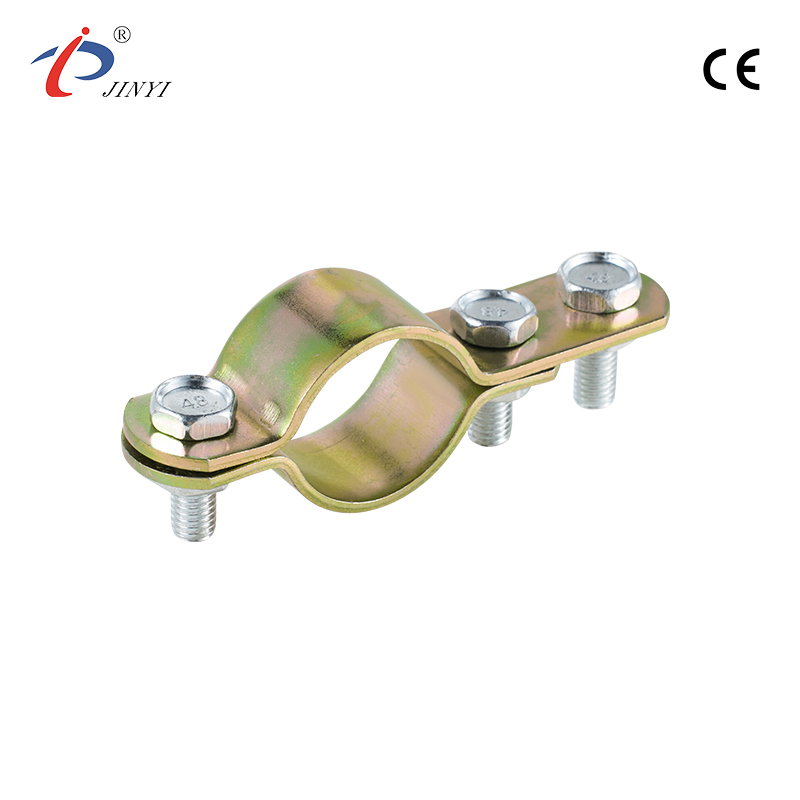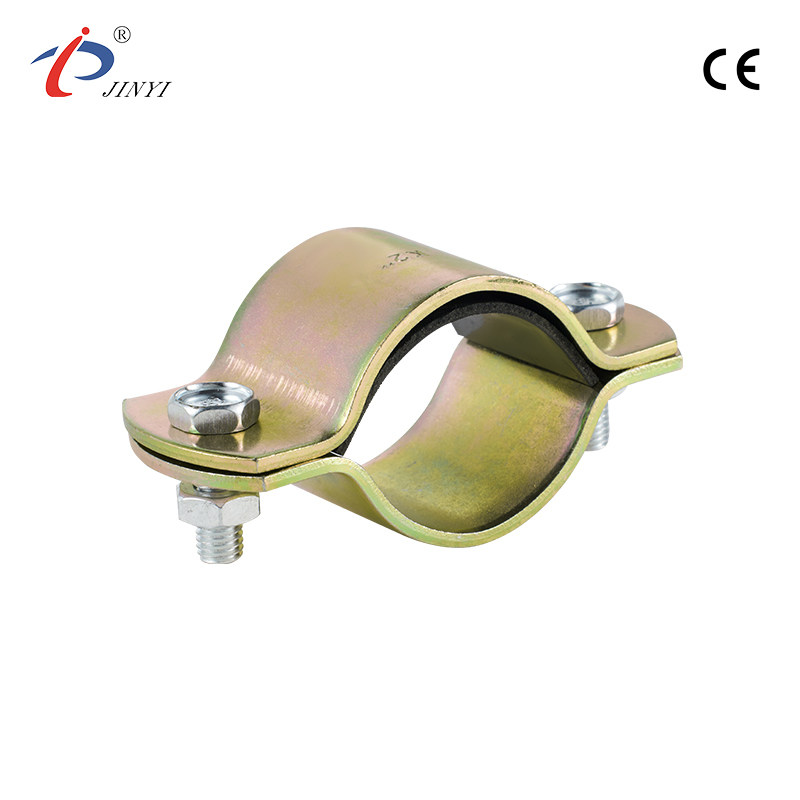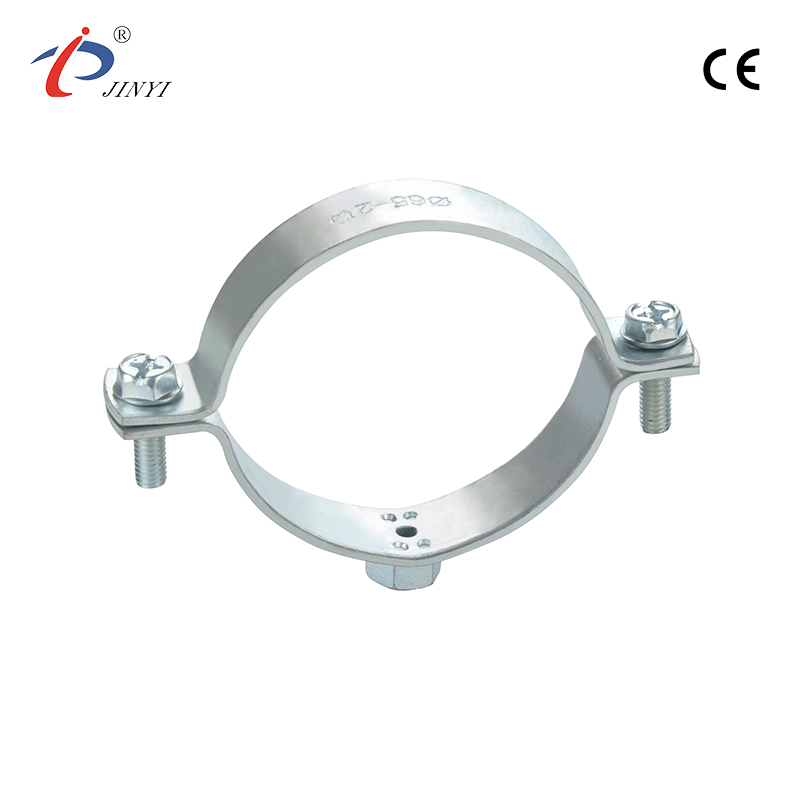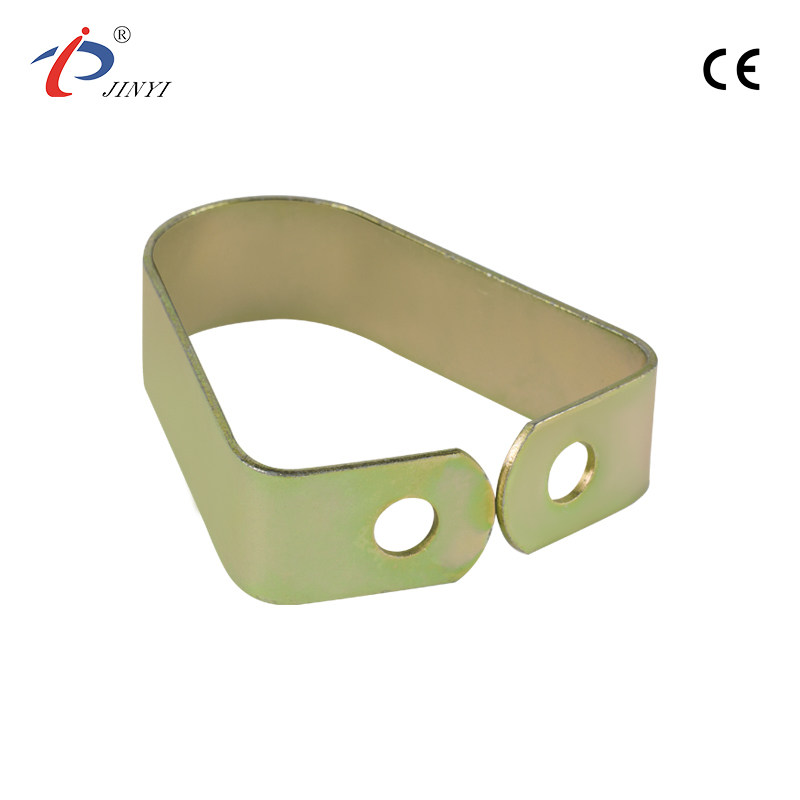What is a Shower Base Support Frame? Components, Types and More
2025-09-12
A shower base support frame is an essential component in modern bathroom installations, providing the necessary stability, durability, and functionality for shower trays. Whether in residential or commercial applications, these support frames are crucial for maintaining the structural integrity of the shower base and ensuring its longevity and effective operation.
In residential settings, shower base support frames help homeowners achieve a secure and stable shower installation, preventing damage or warping of the tray. In commercial applications such as hotels, gyms, and public restrooms, these support frames are critical for ensuring the durability and safety of high-use shower bases, making them suitable for high-traffic areas with heavy usage.
What is a Shower Base Support Frame?
A shower base support frame is a mechanical structure designed to provide support for a shower tray. The frame ensures that the shower tray remains stable, level, and properly positioned during and after installation. It is primarily intended to distribute the weight of the shower base evenly, preventing any sagging or misalignment, and is essential for maintaining proper drainage flow underneath the tray.
The frame also plays a key role in preventing movement that could lead to leaks, cracks, or misalignment over time, thus enhancing the overall lifespan and performance of the shower tray.
Types of Shower Base Systems
Shower base systems can be categorized into various types, with different requirements for support frames based on the system design:
- Acrylic Shower Trays: Lightweight and affordable, often used in residential applications, these require sturdy support frames for long-term stability.
- Ceramic and Stone Shower Trays: Heavier than acrylic trays, these require robust support frames that can withstand the increased weight and provide excellent durability.
- Custom Shower Bases: In some cases, custom shower bases are made from specialized materials like fiberglass or composite materials. These may require custom support frames that can adapt to unique sizes or configurations.
Components of a Shower Base Support Frame
Frame Material Options
- Stainless Steel: Known for its strength, corrosion resistance, and durability, stainless steel is often the preferred material for high-quality support frames, especially in commercial settings where long-term durability is critical.
- Aluminum: Lightweight and rust-resistant, aluminum frames are a cost-effective option for residential and mid-range commercial applications, offering both strength and ease of installation.
- Plastic and Composite Materials: Plastic frames are lightweight and cost-efficient, making them ideal for budget-friendly residential installations. Composite frames offer similar benefits with improved strength and durability, making them suitable for both residential and light commercial use.
Adjustable and Fixed Frame Systems
- Adjustable Frames: These frames offer flexibility in height adjustment, allowing for precise leveling and ensuring that the shower base fits perfectly within the bathroom layout. They are ideal for installations in areas with uneven floors or where customization is needed.
- Fixed Frames: Fixed frames provide a solid, permanent structure that ensures the shower base stays securely in place. These are often used in situations where the base's size and placement are predetermined and do not require frequent adjustment.
Support Structure Elements
- Cross Beams: These elements add stability to the frame, preventing lateral movement and ensuring that the shower base is securely supported from all angles.
- Leveling Feet: Adjustable feet allow the shower base to be leveled even on uneven floors, ensuring proper drainage and preventing the base from sagging or shifting.
- Brackets and Mounting Supports: These components help secure the frame to the floor or wall, ensuring that the frame remains stationary and that the shower tray stays in place, even under heavy usage.
Key Functions and Benefits of a Shower Base Support Frame
Providing Structural Stability to Shower Trays
The primary function of a shower base support frame is to ensure that the shower tray remains stable and securely mounted in place. This prevents the tray from shifting, sagging, or warping over time, ensuring a safe and durable installation.
Enhancing Weight Distribution to Prevent Damage or Warping
By distributing the weight of the shower base evenly, the support frame prevents stress from accumulating at certain points, reducing the risk of cracking or distortion, which can compromise the tray's functionality and appearance.
Preventing Movement and Misalignment of Shower Trays
A secure frame ensures that the shower tray stays properly aligned with the plumbing and the surrounding structure. This prevents leaks caused by misalignment, reducing the risk of water damage to the floor or surrounding walls.
Ensuring Proper Drainage and Water Flow Beneath the Tray
Proper drainage is essential to avoid water pooling under the shower tray, which can lead to mold, mildew, and floor damage. The support frame elevates the tray slightly, allowing for smooth water flow and ensuring that drainage systems function correctly.
Impact on the Overall Longevity and Durability of Shower Bases
By providing consistent and reliable support, the shower base support frame extends the lifespan of the entire shower system. With reduced strain on the shower tray and improved drainage, these frames help minimize the need for repairs or replacement, ensuring a longer-lasting installation.
1. Shower Base Support Frame Materials
Selecting the appropriate material for your shower base support frame affects the durability, cost, and ease of installation. The three most common materials are stainless steel, aluminum, and plastic or composite materials.
a. Stainless Steel: Durability and Corrosion Resistance
Advantages:
Long-lasting: Stainless steel frames provide superior strength and longevity, making them ideal for high-traffic bathrooms.
Corrosion-resistant: Resistant to rust, mold, and mildew, even in constantly damp environments.
High load-bearing capacity: Can support heavy shower bases without deformation.
Considerations:
Cost: Generally more expensive than aluminum or plastic frames.
Weight: Heavier, which may complicate transportation and handling during installation.
b. Aluminum: Lightweight and Cost-Effective
Advantages:
Lightweight: Easier to transport and install, especially in tight spaces.
Cost-efficient: More affordable than stainless steel while still offering good durability.
Moderate corrosion resistance: Aluminum resists rust, but may need protective coatings in extremely humid conditions.
Considerations:
Lower load capacity: Not as strong as stainless steel, potentially limiting its use with heavy shower bases.
Surface damage: More prone to dents or scratches during handling.
c. Plastic and Composite Materials: Advantages in Specific Applications
Advantages:
Versatile: Suitable for custom-shaped or irregular shower bases.
Lightweight and easy to handle: Simplifies installation.
Water-resistant: Naturally resistant to moisture, rust, and chemical exposure.
Considerations:
Limited strength: May not support very heavy shower bases without reinforcement.
Potential for warping: Over time, plastic may deform under sustained weight or heat.
d. Comparing the Pros and Cons of Each Material
| Material | Pros | Cons | Best Use Case |
|---|---|---|---|
| Stainless Steel | Strong, durable, corrosion-resistant | Expensive, heavy | High-traffic or commercial bathrooms |
| Aluminum | Lightweight, cost-effective | Moderate strength, prone to scratches | Residential installations with medium-weight bases |
| Plastic/Composite | Water-resistant, lightweight, versatile | Limited load-bearing, potential warping | Custom or irregular shower bases |
2. Installation and Adjustment of Shower Base Support Frames
Proper installation is essential to ensure stability, prevent leaks, and maintain the longevity of your shower base. Follow these step-by-step instructions for a professional finish.
a. Step-by-Step Guide to Installing Shower Base Support Frames
Prepare the area: Clean the floor and remove any debris. Verify that the subfloor is level.
Measure and mark: Accurately mark the placement of the frame to ensure it aligns with the shower base dimensions.
Assemble the frame: Follow manufacturer instructions, securing all joints and supports firmly.
Place the frame: Position it carefully on the subfloor, checking alignment and orientation.
Level the frame: Use a spirit level to ensure all corners are perfectly horizontal.
Secure to the floor: Use screws, anchors, or other recommended fasteners, depending on the material and subfloor type.
Install the shower base: Carefully place the base onto the frame and confirm stability before final plumbing connections.
b. Tools and Equipment Required
Spirit level
Screwdrivers or electric drill
Measuring tape
Screws and anchors
Rubber mallet (optional)
Protective gloves and safety glasses
c. Importance of Leveling and Precise Alignment
Proper leveling ensures:
Even water drainage
Prevention of cracks or stress points in the shower base
Longer lifespan of both the base and support frame
Even minor misalignment can lead to leaks, wobbling, and structural damage over time.
d. Common Mistakes to Avoid During Installation
Failing to level the frame precisely
Using incorrect fasteners for the material type
Ignoring manufacturer instructions for frame assembly
Overlooking subfloor irregularities that may compromise stability
Applying excessive force that damages lightweight materials
e. Best Practices for DIY vs. Professional Installation
DIY Installation: Suitable for lightweight aluminum or plastic frames with simple shower bases. Ensure all measurements and leveling steps are followed carefully.
Professional Installation: Recommended for stainless steel frames, heavy bases, or complex bathroom layouts. Professionals ensure compliance with building codes and avoid costly mistakes.
Different Types of Shower Base Support Frames and Their Applications
1. Different Types of Shower Base Support Frames
Shower base support frames come in a variety of designs, each offering unique benefits depending on the installation scenario. The main types are fixed, adjustable, modular, and universal support frames.
a. Fixed Support Frames: Characteristics and Use Cases
Characteristics:
Constructed from a single, solid structure.
Designed to fit standard shower base dimensions.
Typically made from stainless steel, aluminum, or heavy-duty plastic.
Use Cases:
Ideal for standard residential bathrooms with pre-defined shower sizes.
Provides stable, long-lasting support with minimal maintenance.
Pros:
High stability and durability.
Simple installation with minimal adjustments.
Cons:
Limited flexibility; not suitable for custom or irregular shower bases.
Replacement or modification can be challenging if layout changes.
b. Adjustable Support Frames: Benefits for Custom Installations
Characteristics:
Features extendable legs or brackets for precise height and alignment adjustments.
Compatible with different shower base thicknesses.
Benefits:
Allows fine-tuning during installation to ensure a level base.
Supports non-standard or slightly uneven flooring.
Use Cases:
Residential and commercial bathrooms with unique layouts.
Renovation projects where precise fitting is required.
Pros:
Customizable to different shower base sizes and heights.
Reduces installation errors related to uneven floors.
Cons:
Slightly more complex to assemble than fixed frames.
Cost may be higher due to added adjustability mechanisms.
c. Modular Support Systems: Flexibility and Scalability
Characteristics:
Consist of interchangeable components that can be combined to fit various shower base sizes.
Typically made from lightweight yet durable materials.
Benefits:
Easy to expand or reconfigure for larger installations.
Facilitates maintenance or replacement of individual parts without dismantling the entire frame.
Use Cases:
Hotels, gyms, and other commercial facilities that may require multiple shower units.
Projects with future expansion or modification plans.
Pros:
Highly adaptable and scalable.
Simplifies transport and storage of frame components.
Cons:
Slightly higher initial investment.
Requires careful planning during assembly to ensure stability.
d. Universal Support Frames: Compatibility with Different Tray Types and Sizes
Characteristics:
Designed to fit a wide range of shower trays and base shapes.
Offers adjustable mounting points or brackets.
Benefits:
Reduces the need to source specific frames for each tray model.
Ideal for installers who work with multiple brands or custom trays.
Use Cases:
Residential renovations with varying shower tray specifications.
Commercial projects where flexibility in tray selection is essential.
Pros:
Versatile, reduces inventory needs.
Supports multiple shower tray designs.
Cons:
May not provide as rigid a fit as dedicated frame systems.
Slightly more complex installation due to adjustable components.
2. Shower Base Support Frames for Commercial vs. Residential Use
Shower base support requirements differ significantly between residential and commercial projects. Understanding these differences ensures long-term performance, compliance with safety codes, and proper water drainage.
a. Considerations for Residential Installations
Space and Layout: Residential bathrooms often have smaller footprints, requiring frames that maximize usable space without compromising stability.
Budget: Homeowners typically prioritize cost-effective solutions while maintaining adequate durability.
Aesthetics: Visible frames should complement bathroom design, especially in open or semi-open installations.
Recommended Frames: Fixed or adjustable frames are often sufficient for most residential applications, offering stability and ease of installation.
b. Requirements for Commercial Installations
Durability: Commercial bathrooms experience higher traffic and require frames that withstand continuous use.
Heavy-Duty Support: Shower bases may be larger or carry more weight, necessitating reinforced frames or modular systems.
Code Compliance: Frames must meet local building codes, safety standards, and accessibility regulations.
Recommended Frames: Modular or universal frames are ideal, offering flexibility, high load-bearing capacity, and long-term reliability in commercial settings.
c. Case Studies of Commercial Bathroom Installations
Hotels: Use modular support systems to accommodate a variety of shower tray sizes and styles, ensuring uniform installation and easy replacement during renovations.
Gyms and Fitness Centers: Adjustable and universal frames allow for quick assembly and robust support in high-traffic areas, reducing maintenance downtime.
Public Restrooms: Fixed heavy-duty frames are preferred for durability, ensuring that multiple units can withstand constant use without structural compromise.
The Role of Shower Base Support Frames in Preventing Water Damage
Shower base support frames are essential components in modern bathroom installations. Beyond providing structural stability for shower trays, they play a critical role in preventing water damage, ensuring proper drainage, and maintaining long-term hygiene and safety.
1. How Frames Aid in Waterproofing and Moisture Control
A shower base support frame acts as a foundation that elevates the shower tray above the subfloor. This separation creates a critical barrier that helps in:
Protecting the subfloor: By elevating the shower base, water that seeps through the tray or grout lines is prevented from directly contacting the floor.
Supporting waterproof membranes: Frames help maintain the integrity of underlayments and waterproofing layers, ensuring that seals remain intact.
Maintaining consistent spacing: Properly aligned frames prevent uneven surfaces where water can accumulate, reducing the risk of leaks.
By integrating a quality support frame, moisture penetration is significantly minimized, which is crucial for extending the lifespan of bathroom flooring.
2. Ensuring Proper Drainage to Avoid Leaks and Water Pooling
One of the key roles of a shower base support frame is to ensure correct alignment and leveling of the tray. Even minor deviations in slope can result in water pooling, slow drainage, or leaks over time.
Benefits include:
Consistent slope for drainage: Adjustable and modular frames allow precise leveling, directing water efficiently to the drain.
Prevention of standing water: Reduces the likelihood of water damage to subfloors and surrounding tiles.
Reduced maintenance: Proper drainage lowers the risk of clogs, overflow, and subsequent repairs.
Frames are particularly important in commercial installations where high usage demands efficient water evacuation to maintain safety and hygiene.
3. Reducing Mold and Mildew Risks by Elevating the Base
Moist environments like bathrooms are prone to mold and mildew growth, which can lead to structural damage and health hazards. Support frames mitigate these risks by:
Elevating the shower base: Allowing air circulation beneath the tray prevents water from stagnating.
Minimizing direct water contact: Reduces dampness in subfloor materials, lowering the conditions that promote microbial growth.
Supporting waterproof barriers: Helps ensure that waterproof membranes and sealants remain effective over time.
This function is especially critical in humid climates or poorly ventilated bathrooms, where prolonged moisture exposure can accelerate deterioration.
4. Impact on Floor Structure Integrity and Longevity
Shower base support frames not only protect against water damage but also enhance overall floor stability:
Even load distribution: Frames distribute the weight of the shower tray and user load evenly, preventing stress points and cracks in the floor.
Structural reinforcement: Reduces bending or sagging of the subfloor over time, particularly in older homes.
Extended lifespan: Maintaining proper support and water management ensures the bathroom floor lasts longer, minimizing costly repairs.
In commercial environments, where multiple users or heavier shower units are common, robust frames are essential for maintaining structural integrity.
5. How to Choose the Right Shower Base Support Frames
Selecting the appropriate frame involves balancing material choice, installation type, and project requirements:
| Factor | Consideration | Recommendation |
|---|---|---|
| Material | Stainless steel, aluminum, or plastic/composite | Stainless steel for durability, aluminum for cost-effective lightweight support, plastic for custom trays |
| Installation Type | Fixed, adjustable, modular, or universal | Fixed for standard trays, adjustable for uneven floors, modular/universal for commercial or custom projects |
| Drainage & Leveling | Ensure proper slope to the drain | Adjustable or modular frames recommended for precise leveling |
| Environment | Residential vs. commercial | Heavy-duty frames for commercial, lightweight or adjustable frames for residential |
| Moisture & Waterproofing | Supports waterproof membranes | Frames that elevate the tray and allow underfloor ventilation are preferred |
Key Tips for Selection:
Confirm the weight capacity of the frame matches your shower tray.
Choose adjustable or modular frames for renovations or custom layouts.
Ensure compatibility with the existing drainage system.
Consider corrosion resistance for humid or high-traffic bathrooms.
Shower base support frames are not just structural components—they are critical for preventing water damage, promoting proper drainage, reducing mold risks, and preserving floor integrity. By selecting the right material and frame type, homeowners and professionals can ensure long-lasting, safe, and hygienic shower installations. Proper elevation, leveling, and moisture control provided by quality frames contribute directly to a bathroom’s durability and comfort.



 русский
русский  Español
Español 